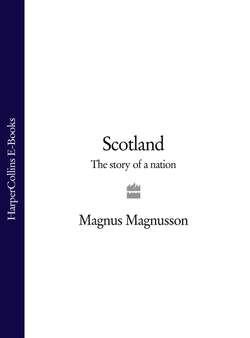Читать книгу Scotland: The Story of a Nation - Magnus Magnusson - Страница 52
The Competitors
ОглавлениеThe succession to the throne of Scotland was wide open. There were no fewer than thirteen claimants – ‘Competitors’, as they were called; many of them were remote or foreign (they included King Erik of Norway, as father of the Maid of Norway). But there were only two who really mattered: John Balliol (c.1250–1313), Lord of Galloway, and Robert Bruce (1210–95), now in his eighties, the fifth Lord of Annandale and grandfather of the future king.
John Balliol was descended from a Picardy nobleman, John de Bailleul, who had been a landowner in England under William Rufus and whose son, Guy, came to Scotland in the reign of David I. In 1263 his father, John Balliol the elder, had founded Balliol College, Oxford, as an act of penance for assaulting the Bishop of Durham, and his wealthy mother, Devorgilla, Lady of Galloway, had founded the beautiful and romantic Sweetheart Abbey a few miles south of Dumfries in memory of her husband in 1273 – it is his embalmed ‘sweet heart’ which was buried with her there when she died in 1290.
Robert Bruce was descended from an old Normandy family named de Brus, from Bruis (Brix), who were given lands in north Yorkshire by Henry I; the family came to Scotland in the reign of David I in about 1120, when Robert de Brus was granted the Lordship of Annandale and its attendant castles of Annan and Lochmaben as a military fief in what is now Dumfriesshire.1 Robert de Brus was the ancestor of a long line of Bruce Lords of Annandale, most of whom were called, rather confusingly, Robert. The fourth Robert Bruce, Lord of Annandale, married into the King David dynasty, as did one of the Balliol family: they married daughters of David, Earl of Huntingdon, the youngest son of King Malcolm IV and a grandson of David I.
Robert Bruce (the ‘Competitor’) could claim a greater nearness of degree than his rival John Balliol: he was the grandson, on his father’s side, of Isabella, the younger daughter of David, Earl of Huntingdon. Balliol, the younger of the two men, nevertheless had the senior claim: he was the great-grandson, on his mother’s side, of Margaret, the eldest daughter of Earl David. The argument would centre on which was the more important, proximity or primogeniture.
The competition for the throne has come to be known as the ‘Great Cause’. For a while it threatened to degenerate into civil war between supporters of the two factions. The most powerful family in Scotland were the Comyns, Lords of Badenoch and Earls of Buchan; John Comyn, Lord of Badenoch, who was himself one of the lesser Competitors, was Balliol’s brother-in-law, and there was no love lost between the Comyns and the Bruces.
To avert an armed struggle the Guardians approached Edward I to arbitrate between the claimants. Edward was more than willing to undertake the task of honest broker, and summoned the Scots to a parliament to be held on 6 May 1291 at Norham Castle, the great stronghold of the Bishop of Durham on the English side of the Tweed.
